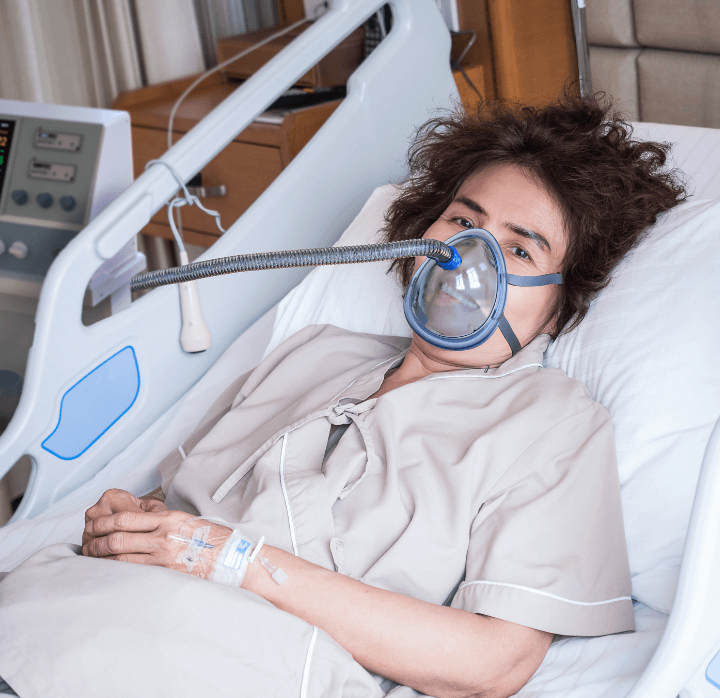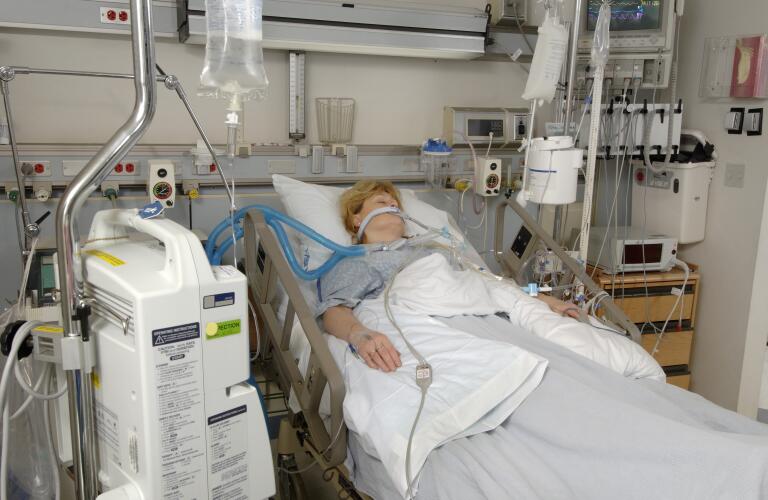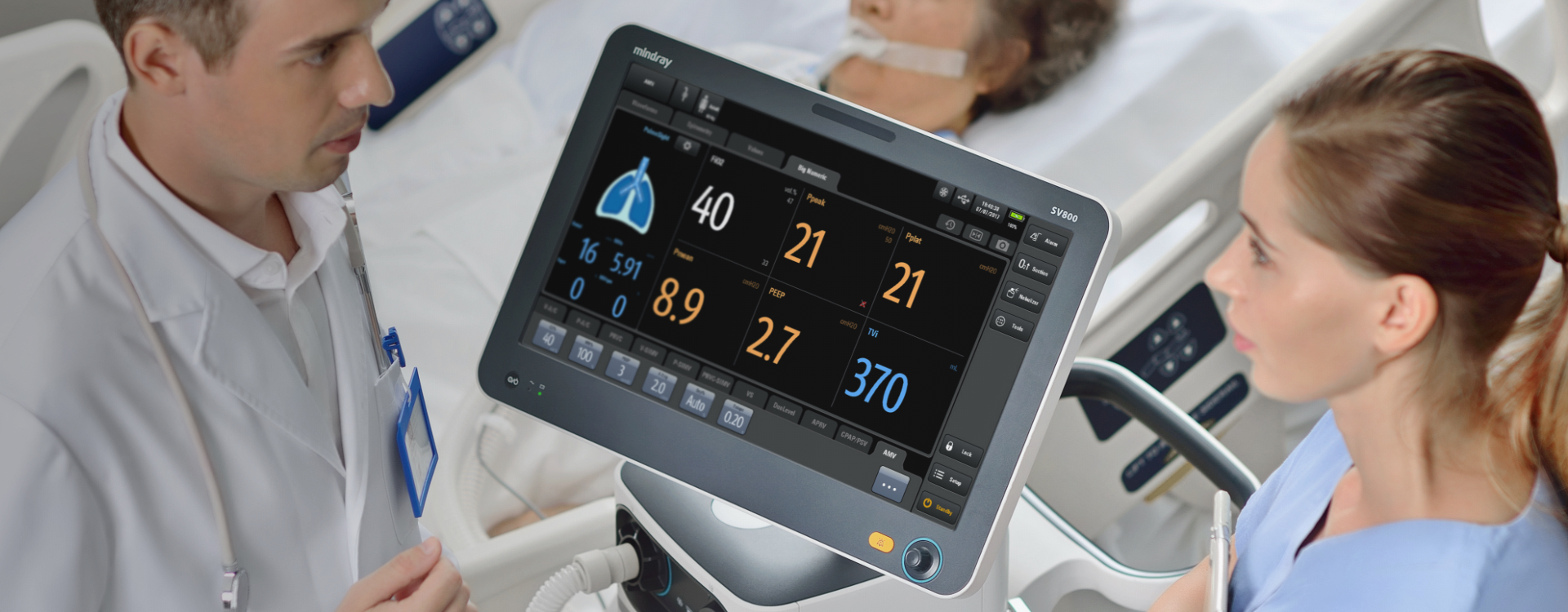In modern healthcare, ventilators are indispensable devices that provide life-saving respiratory support to patients facing breathing difficulties. Whether in intensive care units (ICUs), emergency rooms, or during transport, ventilators ensure that patients receive adequate oxygenation when they cannot breathe independently. As technology advances and healthcare demands evolve, selecting the best ventilators for hospitals and clinics becomes critical to improving patient outcomes and operational efficiency in 2025.
What is a Ventilator?

Definition and Purpose of a Ventilator
A ventilator is a sophisticated medical device designed to assist or replace spontaneous breathing in patients with compromised respiratory functions. It works by mechanically delivering air, oxygen, or a specific gas mixture to the patient’s lungs, thus ensuring proper oxygen exchange and removal of carbon dioxide. Hospitals rely heavily on ventilators not only for life support during acute illnesses but also for procedures requiring anesthesia and respiratory therapy.
The core purpose of a ventilator is to support patients whose normal breathing mechanisms are impaired due to conditions like pneumonia, chronic obstructive pulmonary disease (COPD), acute respiratory distress syndrome (ARDS), or after major surgeries. Without a ventilator, these patients would be unable to sustain adequate oxygen levels, risking organ failure or death.
Introduction to CNMEDITECH Brand
As a leading innovator in medical technology, CNMEDITECH has established itself as a trusted manufacturer of high-quality ventilators. Renowned for incorporating cutting-edge features, robust engineering, and stringent quality standards, CNMEDITECH’s ventilators are tailored to meet the diverse demands of modern healthcare environments. Their commitment to research and development ensures that hospitals and clinics have access to durable, efficient, and user-friendly ventilation solutions, especially vital in 2025’s rapidly advancing medical landscape.
Main Types of Ventilators

Mechanical Ventilators
Mechanical ventilators are the traditional, most widely used type in both hospital and outpatient settings. These devices are designed to provide continuous airflow support, meticulously controlled based on parameters set by healthcare professionals. Mechanical ventilators are highly versatile—able to simulate various breathing patterns, pressures, and tidal volumes tailored to individual patient needs.
In hospitals, mechanical ventilators are often integrated with ICU systems, providing sophisticated modes such as assist-control (A/C), synchronized intermittent mandatory ventilation (SIMV), and pressure support ventilation. Their advanced features allow them to adapt to changing patient conditions, making them essential tools for critical care. As technology evolves, mechanical ventilators are becoming more compact, energy-efficient, and capable of remote monitoring, which is vital for 2025’s healthcare environment.
Portable Ventilators
Portable ventilators have revolutionized respiratory care by offering mobility without compromising performance. These compact devices are often battery-powered, lightweight, and designed for ease of use in diverse settings including emergency situations, home care, and transport logistics. In 2025, portable ventilators are equipped with smart interfaces, connectivity features, and multiple ventilation modes to support patients across a variety of scenarios.
The importance of portable ventilators has grown significantly due to increased demand for home-based care solutions, emergency response, and outpatient management of chronic respiratory conditions. Their reliability, ease of deployment, and integration with telehealth systems exemplify their critical role in expanding the reach and flexibility of respiratory therapy across healthcare ecosystems.
ICU Ventilators
ICU ventilators are specialized, high-performance ventilators engineered for intensive care units where complex respiratory management is required. These devices offer a broad range of ventilation modes, precise control over timing, pressures, and volumes, and the ability to manage multiple concurrent therapies such as humidification and temperature control.
In 2025, ICU ventilators are becoming more intelligent, incorporating AI-driven algorithms that assist clinicians in optimizing therapy, monitoring patient responses, and reducing complications like ventilator-associated pneumonia. The robust design of ICU ventilators ensures durability and advanced safety features, making them the backbone of critical care units worldwide.
How Does a Ventilator Work?

Key Components and Functions
A ventilator consists of several essential components working harmoniously to deliver respiratory support. At its core are the air or oxygen source, the breathing circuit, and the control mechanism. The control system, often featuring sophisticated software, regulates parameters such as tidal volume, respiratory rate, and pressure.
Additional vital components include sensors for monitoring airway pressures, flow sensors, humidifiers, and alarms. These elements are designed to ensure precise operation, safety, and comfort for the patient. Advanced ventilators in 2025 also feature user-friendly interfaces and connectivity options for seamless integration with hospital information systems, enabling real-time monitoring and data sharing.
How Ventilators Support Patients’ Breathing
A ventilator functions by delivering a mixture of gases into the patient’s lungs through a tube inserted into the airway (endotracheal tube or tracheostomy). It can operate in various modes—assisting, supporting, or fully controlling breathing—to match the patient’s specific needs. The device senses the patient’s effort and time the delivery of breaths accordingly, providing synchronized support.
In critical situations, ventilators not only supply oxygen but also remove excess carbon dioxide, maintaining the delicate balance of blood gases. By doing so, they allow the patient’s lungs and respiratory muscles to rest and recover. The sophisticated operation of modern ventilators ensures minimal discomfort and maximum safety, which is crucial in high-stakes environments like hospitals and clinics in 2025.
How to Choose the Right Ventilator

Suitable Scenarios and Technical Specifications
Selecting an appropriate ventilator requires a thorough understanding of the specific clinical scenario. For instance, ICU ventilators are necessary for patients in critical conditions requiring complex modes and high levels of control. Conversely, portable ventilators are better suited for emergency responses and outpatient care, offering mobility and simplicity.
Key technical specifications should include compliance with international standards, adjustable ventilation modes, user interface complexity, connection options, and power supply duration. For hospitals in 2025, considerations around data integration, telemonitoring capabilities, and future-proof features are equally important to adapt to evolving medical landscapes and regulatory requirements.
Budget and After-sales Considerations
While quality and advanced features are paramount, budget constraints can influence purchasing decisions. It’s essential to balance cost with functionality, reliability, and service support. High-quality ventilators from reputable manufacturers tend to reduce long-term costs by minimizing maintenance, downtime, and adverse events.
After-sales support—such as maintenance, training, technical assistance, and warranty services—are vital factors. In 2025, selecting a vendor like CNMEDITECH, known for comprehensive after-sales support and durable equipment, can ensure the longevity and optimal performance of the ventilators, contributing to improved patient care and institutional reputation.
Benefits and Applications of Ventilators

Improving Patient Survival Rates
One of the most compelling benefits of ventilators in medical practice is their ability to significantly improve survival rates among critically ill patients. By delivering precise and adjustable respiratory support, ventilators help stabilize patients with severe respiratory failure, buy time for recovery, and prevent multi-organ failure.
Numerous studies have demonstrated that early and appropriate ventilator intervention reduces mortality, especially in conditions like ARDS and COVID-19 related complications. With technological advancements, ventilators in 2025 will become even more effective at tailored support, thus elevating the standards of critical care worldwide.
Practical Use in Medical Settings
Beyond critical care, ventilators serve essential roles in a variety of medical scenarios. In operating rooms, they assist in anesthesia—for example, delivering gases necessary for surgery. In emergency medicine, portable ventilators facilitate rapid response on the scene or during patient transport.
Furthermore, ventilators are instrumental in chronic respiratory therapy, supporting patients with conditions like COPD at home, and during pandemic outbreaks. Their versatility and reliability are vital assets to healthcare facilities aiming to deliver comprehensive, high-quality respiratory care.
Common Issues and Maintenance Tips

Ventilator Alarm Troubleshooting
Alarms are critical safety features in ventilators, alerting staff to issues such as disconnections, high pressures, or system malfunctions. Regularly testing alarm functions and understanding their typical causes can prevent many emergencies. For example, persistent high-pressure alarms may indicate airway obstructions or secretions, requiring prompt intervention.
Proper training in alarm response protocols and routine system checks ensure that issues are swiftly addressed, minimizing patient risk. As ventilators become more sophisticated, integrating smart alarm systems with remote monitoring can significantly improve response times and safety.
Maintenance and Care Recommendations
Routine maintenance is crucial to preserving ventilator functionality and longevity. This includes cleaning and disinfecting components, replacing filters, inspecting circuits, and verifying calibration regularly. Following manufacturer guidelines and recording maintenance activities help ensure compliance with safety standards.
In 2025, digital diagnostic tools enable predictive maintenance, alerting technicians to potential issues before failures occur. Investing in staff training, comprehensive cleaning protocols, and adherence to maintenance schedules ensures these critical devices continue supporting patient lives effectively.
Global Standards and Certifications
FDA, CE, ISO Certifications
Standards and certifications serve as benchmarks of safety, efficacy, and quality for ventilators. FDA approval in the United States, CE marking in Europe, and ISO certifications globally indicate adherence to stringent regulatory requirements. These certifications assure healthcare providers and patients of compliance with safety, hygiene, and performance standards.
For large-scale deployment in hospitals and clinics, selecting ventilators with recognized international certifications ensures compatibility with regulatory environments and facilitates procurement from global suppliers in 2025.
CNMEDITECH’s Quality Assurance
CNMEDITECH adheres rigorously to international standards, combining advanced manufacturing practices with comprehensive testing protocols. Their ventilators undergo extensive quality assurance processes, including compliance with ISO 13485 standards for medical devices, ensuring consistent performance and safety.
The company’s commitment to quality, innovation, and customer satisfaction makes their products highly respected worldwide—an essential consideration for healthcare institutions seeking reliable respiratory support devices in 2025.
Frequently Asked Questions (FAQ)
Q: How do I determine the best ventilator for my hospital in 2025? A: Consider your specific clinical needs, patient demographics, budget, and technological integration requirements. Consulting with suppliers like CNMEDITECH for tailored solutions can help identify the best options.
Q: Are portable ventilators suitable for long-term patient care? A: Portable ventilators are primarily designed for emergency, transport, and outpatient use. For long-term care, especially in hospitals or home settings, dedicated home-care or ICU ventilators are more suitable.
Q: What advancements can we expect in ventilator technology by 2025? A: Expect increased integration of AI and machine learning for personalized therapy, enhanced connectivity for remote monitoring, improved user interfaces, and eco-friendly energy options.
Q: How frequently should ventilators be maintained? A: Routine maintenance should follow manufacturer recommendations—typically weekly checks for basic systems and comprehensive inspections quarterly or biannually for high-end units. Always keep detailed records of maintenance activities.
Q: Is staff training necessary for using advanced ventilators? A: Absolutely. Proper training ensures the staff can operate ventilators safely and respond appropriately to alarms or malfunctions. Many manufacturers, including CNMEDITECH, provide training support and resources.
Conclusion
Importance of Choosing Quality Ventilators
In the rapidly evolving landscape of healthcare technology, selecting high-quality ventilators is more crucial than ever. These devices are the backbone of respiratory care, directly influencing patient outcomes, safety, and operational efficiency. As we approach 2025, the emphasis on innovation, reliability, and compliance will continue to grow, making it essential for healthcare providers to choose devices that meet or exceed current standards.
Contact CNMEDITECH for Support
To equip your hospital or clinic with the best ventilators in 2025, trust CNMEDITECH’s comprehensive product offerings and dedicated support team. With a focus on quality, innovation, and customer satisfaction, CNMEDITECH can provide solutions tailored to your specific needs, ensuring your facility remains at the forefront of respiratory care innovation.
By understanding the intricacies of ventilators, their types, functions, and standards, healthcare institutions can make informed decisions that ultimately improve patient survival and quality of life. Investing in the right technology today paves the way for a healthier, safer tomorrow.

